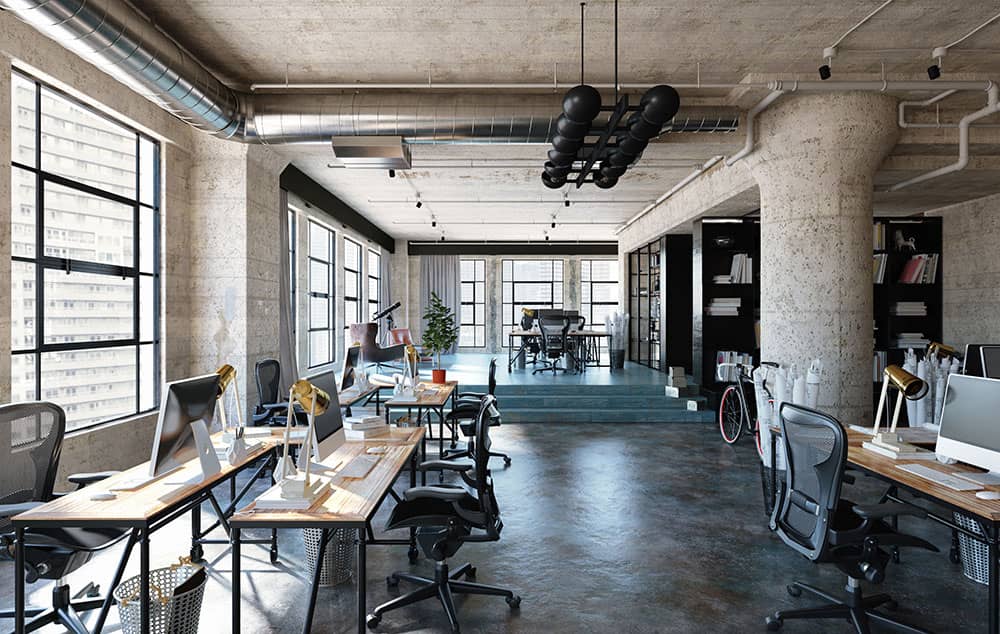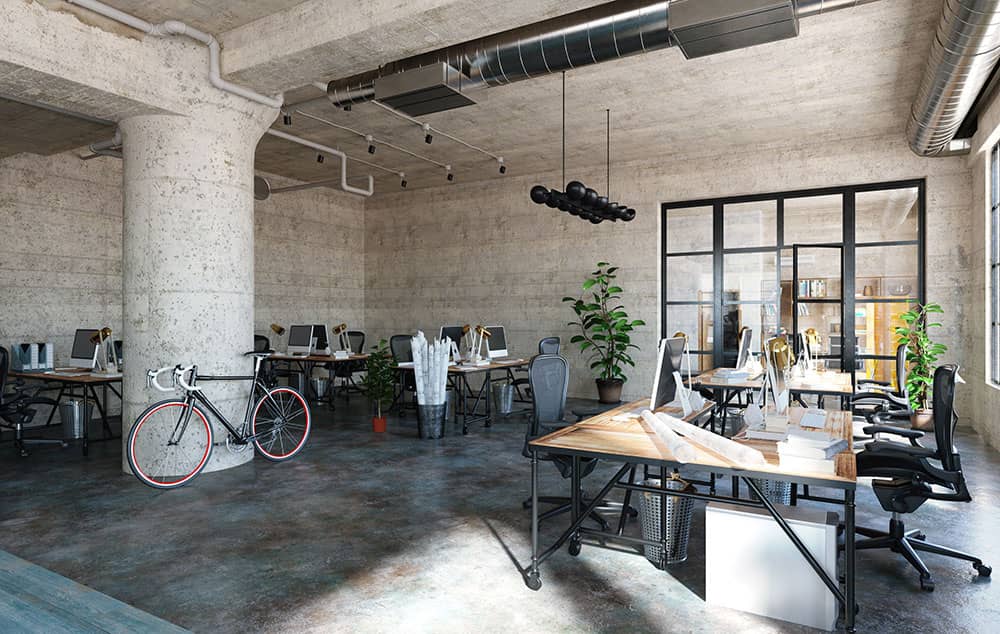When it comes to interior design, we’ve seen how polarising trend combinations can be, especially in commercial spaces. Offices, stores, and the like typically harness the power of bright hues, representing liveliness and productivity. But at the other end of the spectrum, we also notice interiors with an industrial look. What is with this design that makes it interesting?
The Key Concepts of Industrial Design
Several years back, industrial décor was mainly used in warehouses and factories. The design was thought to be gloomy and bland, with nothing standing out. However, those days are gone. Even though modern industrial design still has the same look, it works wonderfully with the right fixture, scheme, and texture.
But what makes interior design industrial? Here are the characteristics to look for:
- Industrial style incorporates the elements of traditional factories into contemporary commercial spaces. Think steel, iron, wood, and cement – the primary building materials used.
- Exposed pipes, brick, and beams are the highlights of the design. In a living space, these things are typically concealed.
- Industrial interior design does not hide behind colours, façades, and decorations. It sticks to bare walls, grey concrete, and even rough ceilings.
- This design is neither soft nor inviting. There’s nothing intimate about the look, but it surprisingly has lots of character. The pieces combine form and function. The style merges traditional and modern. You will see large steel windows in an open floor layout where the interiors use a neutral colour palette. The simple, straightforward look is attractive today, especially when paired with streamlined décor.
Industrial interior design is classically intriguing. At the same time, it represents what people love today: minimalism. It’s a combination of both vintage and modern, which makes the whole style more than just stark plainness.
Concrete as the Top Material Choice for Industrial Interior Design
The industrial look is easily recognisable because it uses the same materials throughout the whole space. While there are components, such as steel, iron, and even vintage furniture, one thing completely stands out: concrete. We see concrete everywhere in an industrial interior design: flooring, walls, staircases, and even furniture.
For numerous decades, concrete was only used in pathways. It was the material of choice for external locations, such as garages, patios, and walkways, due to its resilience and durability. But people and designers probably realised that indoor spaces require sturdiness, too.
Apart from the strength of concrete, the material is utilised for its look. While it is grey and perhaps dull for some people, it has a certain unfinished look that makes the space look exciting.
Appearance means a lot for commercial spaces. For example, offices should inspire employees to focus and work hard. While some people stick to colourful designs, minimalistic concrete walls offer fewer distractions.
Tips for the Successful Use of Concrete in Commercial Interior Designing
Residential concrete typically does not have many design requirements. It’s mostly about the homeowner’s preferences, the skill of the contractor or builder, and the budget. The lack of specifications is actually a good thing. But it’s not the same with commercial, warehouse, industrial projects or hospitality flooring. It becomes easier after the application or installation of concrete, though.
So, let us first take a look at concrete specifications that can affect the final look of the material:
- Commercial projects require a more detailed and specific plan, including the identification of base and subbase components.
- The thickness of concrete should be determined based on the subbase material while also considering the anticipated load in the space. Warehouses, for example, require thicker concrete compared to offices whose main concern is frequent foot traffic.
- Concrete strength, along with the mixture proportion, should be specified, as well. Obviously, you don’t need to be concerned about the numbers or ratios. The contractor will take care of the water-cement ratio and admixtures for you.
- The positioning and type of reinforcement should be discussed, too. Reinforcements are required in commercial structures to help control cracks and damages, among others.
- The surface treatment and finish should be talked about, as well. Commercial spaces need durable surfaces so that a hardener may be necessary. A hard trowelled surface finish is quite common in industrial flooring.
- Curing is also a matter that should be discussed with the contractor. The curing requirement of a surface depends on a variety of factors. For example, if it’s a warehouse that requires high temperatures, the curing method should allow concrete to respond to the warmth.
Polished concrete is perhaps the most desirable concrete finish for commercial and industrial spaces. It’s durable and has all the other qualities that make concrete the primary material of choice in busy places. At the same time, it offers individuality, which is vital for many businesses.
Polished concrete has different levels of exposure and sheen. Some prefer flat while others want a high shine, so people walking can see their reflection almost clearly.
Industrial spaces often go for the salt and pepper look, but some opt for large aggregate. Exposed aggregate makes a lot of difference in the final look of the surface. Exposure can be “very little,” which does not remove blemishes or imperfections on concrete. Large aggregate exposure delivers an extremely attractive result but requires aggressive grinding. It means high costs and may even take longer to finish.
Interior design concerns with concrete are common but easily repairable. For example, you think that your office looks bland because of the concrete floor and walls. Fix your concrete design problem with the following tips:
- Intersperse concrete walls with slate and wood for a textured appearance. Use greens, browns, blacks, or greys in their colour palette to make everything simple.
- Concrete panels combined with timber make walls look more innovative.
- Using concrete table tops boosts the space’s elegant beauty, which is preferred in office settings.
- Plus, concrete table tops are highly customisable. You can choose the colour and texture that best suit the space.
Concrete works exceptionally well with other raw materials, such as wood and steel. But you can also add a touch of warmth. Industrial interior design has indeed evolved, meeting the balance to create a visually appealing look.





